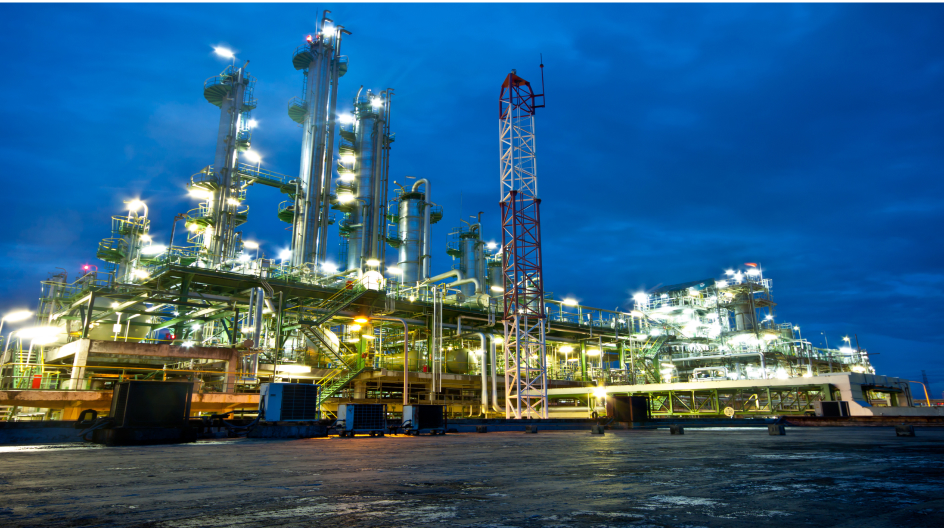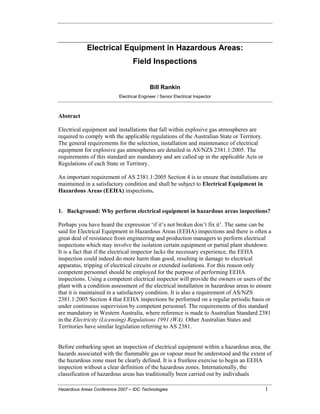Roar Solutions Can Be Fun For Anyone
Wiki Article
Excitement About Roar Solutions
Table of ContentsThe smart Trick of Roar Solutions That Nobody is Talking AboutThings about Roar SolutionsThe Greatest Guide To Roar Solutions
In order to protect installments from a potential explosion a technique of evaluating and classifying a potentially harmful area is called for. The objective of this is to guarantee the appropriate selection and setup of devices to ultimately protect against an explosion and to make sure safety of life.
(https://www.bark.com/en/au/company/roar-solutions/Bz3O1R/)
No tools should be installed where the surface temperature level of the equipment is higher than the ignition temperature level of the provided threat. Below are some usual dust unsafe and their minimal ignition temperature level. Coal Dirt 380C 225C Polythene 420C (thaws) Methyl Cellulose 420C 320C Starch 460C 435C Flour 490C 340C Sugar 490C 460C Grain Dirt 510C 300C Phenolic Material 530C > 450C Aluminium 590C > 450C PVC 700C > 450C Soot 810C 570C The probability of the danger existing in a focus high adequate to create an ignition will certainly vary from area to place.
In order to identify this risk a setup is divided into locations of threat relying on the amount of time the dangerous exists. These areas are described as Areas. For gases and vapours and dusts and fibres there are 3 areas. Zone 0 Zone 20 A dangerous environment is highly likely to be existing and may exist for lengthy durations of time (> 1000 hours annually) and even continuously Zone 1 Area 21 A hazardous atmosphere is possible but unlikely to be present for long durations of time (> 10 450 C [842 F] A category of T6 implies the minimum ignition temperature level is > 85 C [185 F] Harmful location electrical equipment perhaps created for usage in greater ambient temperature levels. This would indicated on the rating plate e.g. EExe II C T3 Ta + 60C( This suggests at 60C ambient T3 will not be exceeded) T1 T1, T2, T3, T4, T5, T6 T2 T2, T3, T4, T5, T6 T3 T3, T4, T5, T6 T4 T4, T5, T6 T5 T5, T6 T6 T6 A T Course rating of T1 suggests the maximum surface area temperature level generated by the tool at 40 C is 450 C. Presuming the linked T Class and Temperature level score for the tools are proper for the area, you can constantly use a tool with a more rigid Division score than needed for the area. There isn't a clear solution to this question. It truly does rely on the kind of tools and what repair work require to be brought out. Equipment with details test treatments that can not be performed in the field in order to achieve/maintain 3rd party score. Must come back to the manufacturing facility if it is before the equipment's solution. Area Repair By Authorised Worker: Difficult testing may not be called for however certain treatments might need to be adhered to in order for the devices to maintain its 3rd party ranking. Authorized personnel must be utilized to carry out the work properly Fixing have to be a like for like substitute. New element need to be taken into consideration as a direct substitute requiring no special testing of the tools after the fixing is full. Each tool with a harmful rating must be reviewed individually. These are outlined at a high degree below, but for even more in-depth information, please refer directly to the guidelines.
Not known Details About Roar Solutions
The tools register is a thorough data source of equipment documents that includes a minimum collection of fields to determine each product's place, technological parameters, Ex-spouse category, age, and ecological data. The proportion of In-depth to Shut examinations will certainly be established by the Equipment Risk, which is analyzed based on ignition danger (the likelihood of a source of ignition versus the possibility of a combustible ambience )and the dangerous area classification( Zone 0, 1, or 2). Implementing a robust Risk-Based Assessment( RBI )method is critical for guaranteeing compliance and safety and security in handling Electric Tools in Hazardous Areas( EEHA).
A Biased View of Roar Solutions

In terms of eruptive danger, a harmful area is an environment in which an eruptive environment exists (or might be anticipated to be present) in amounts that need special preventative measures for the building, installation and usage of devices. eeha courses. In this article we explore the difficulties faced in the workplace, the danger control measures, and the required competencies to work safely
These substances can, in certain conditions, develop explosive ambiences special info and these can have major and tragic repercussions. Many of us are acquainted with the fire triangle remove any one of the three aspects and the fire can not take place, however what does this mean in the context of hazardous locations?
In most circumstances, we can do little regarding the degrees of oxygen in the air, yet we can have substantial influence on resources of ignition, for instance electric equipment. Unsafe locations are recorded on the unsafe area classification illustration and are determined on-site by the triangular "EX-SPOUSE" indication. Here, amongst other crucial info, zones are split right into three kinds depending on the threat, the chance and period that an explosive ambience will certainly exist; Area 0 or 20 is deemed the most harmful and Area 2 or 22 is deemed the least.
Report this wiki page